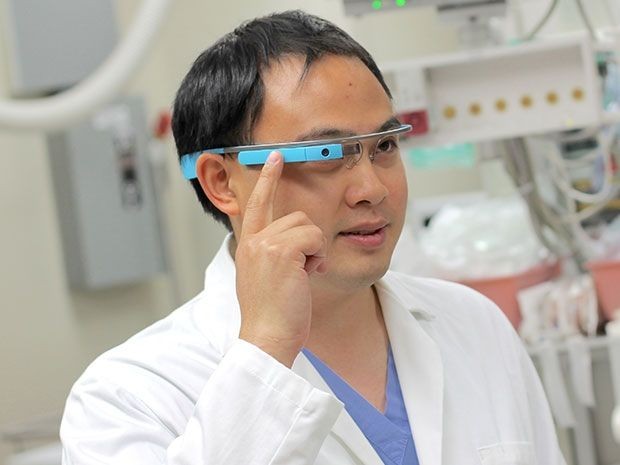
Image source: University of Massachusetts School of Medicine.
In 2012, Google Glass officially became the focus of attention in a high-flying parachuting conference. However, due to high prices and other factors, it has not been able to catch fire. In January 2015, this product finally came to an end. The end of my life.
However, medical experts at the University of Massachusetts Medical School (hereinafter referred to as UMMS) are reluctant to let Google glasses retire prematurely. They have developed a killer application for this veteran. In the future, Google Glass will become a good assistant in the emergency room. With Google Glass, off-site experts can observe and diagnose the patient's condition in real time and accurately. In the future, at the disaster site, experts can quickly analyze and dispose of injuries without visiting them.
In fact, Google Glass has been used in medical systems before. For example, technicians project patient cases on glasses, but after using them for a while, they found that the lenses of Google glasses are too small, and important information is easy to mix.
Peter Chai, Kavita Babu and Edward Boyer, respectively, are medical toxicologists and emergency doctors at UMMS. They believe that Google Glass should not be used as a display for information. It should pass the information out. “As an emergency doctor, your job needs to race against time, and judgment must be vigorous,†Chai said. "If you spend most of your time talking to an expert, I am afraid that the patient is in danger, and many conditions on the phone cannot be described."
With the development of technology, telemedicine has become more and more popular in the field of health care, but for the most part we need a large computer and a fixed camera. Therefore, a head-mounted image transmission system has become the product that emergency doctors dream of.
Previously, Chai tested Google Glass in the emergency department of Rhode Island Hospital, where he was consulting for skin diseases. Last year, the UMMS team also successfully used Google Glass to do toxicology consultation. A first-aid physician also used Google Glass to pass the patient's condition back to the expert in real time to consult him. Toxicology experts said that the success rate of this kind of real-time consultation is as high as 89%. Six patients have successfully found the poison with the help of experts, otherwise the consequences are unimaginable.
Recently, Chai worked with the Bangna Health Center in Phoenix to improve the accuracy and reliability of Google Glass. Fifty patients were involved in the program, and the researchers compared the two outcomes and found a link between the two. Subsequently, they published the results of the study in the Journal of Medical Toxicology.
Responsible for the study was Aaron Skolnik of the Banna Drug and Drug Information Center, who hopes to use Google Glass in the future to help doctors at Arizona County Hospital diagnose the disease. “Although Google Glass has suffered a complete defeat in the consumer sector, it still has great potential in medical and industrial applications,†says Skolnik. “It provides a large amount of accurate and reliable data remotely at relatively low cost.â€
Although Google Glass has great potential, it still needs to overcome two major difficulties before the second spring. First, the clarity of its built-in camera is indeed average; second, the experts who provide consulting have not yet found a good data storage method.
With the advancement of technology, the above two problems are actually solved, so the UMMS team has planned to use Google Glass for the disaster scene. For example, firefighters who rescue people from the firefield have not received professional training in medicine. If off-site experts can provide medical diagnosis and emergency treatment methods for the first time, the survival rate of the wounded will be much higher.
“Our ultimate goal is to create a complete set of sensors and technologies to help doctors communicate remotely with patients,†Chai said. The move is also to change the way emergency doctors work. "At the moment, we are still the only technical experts who have stayed in the paper age."
Intermediate for Cas 877399-52-5
Crizotinib Intermediate,Crizotinib Api,Crizotinib Cas 877397-65-4,Crizotinib Intermediates
Shandong Bolode Bio-technology Co., Ltd. , https://www.bldpharma.com